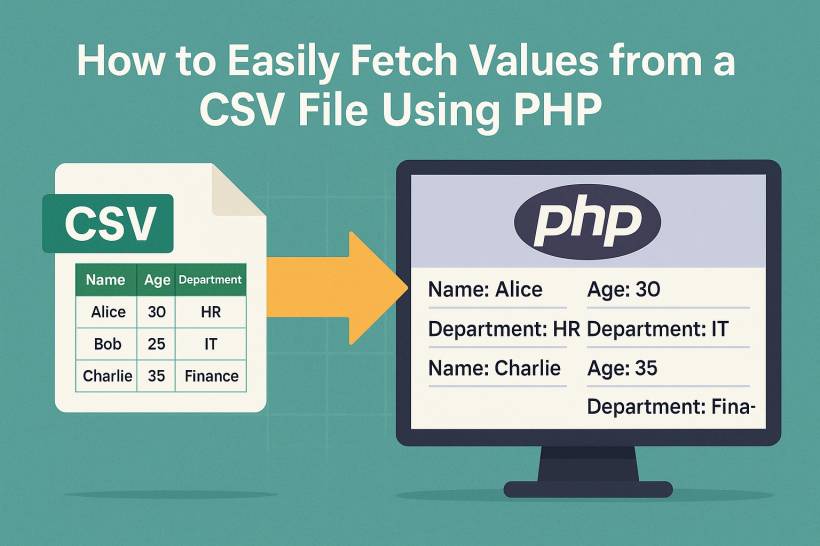When you're building a PHP-based application, there's often a need to read data from a spreadsheet. Maybe it's a list of employees, drug prices, product inventories, or survey responses. And while Excel (.xlsx) is a common format, sometimes the simplest and most efficient solution is to use a CSV (Comma-Separated Values) file instead.
Good news? PHP makes reading CSV files incredibly easy — and you don't need any external libraries to get started.
Why Choose CSV Over Excel?
Let's start with a practical comparison.
While Excel files are great for human use — with formulas, formatting, and multiple sheets — they require third-party PHP libraries like PhpSpreadsheet to parse. These libraries are powerful but come with extra overhead, such as requiring Composer and compatible server extensions.
CSV files, on the other hand, are just plain text. You can open them in any text editor, they're lightweight, and PHP comes with built-in functions that can handle them effortlessly. If your Excel sheet contains simple rows and columns of data, converting it to a CSV format might be the fastest and most developer-friendly way to process it.
How CSV Files Work
A CSV file stores data line by line, where each value is separated by a comma (,). Here's an example:
Alice,30,HR
Bob,25,IT
Charlie,35,Finance
Think of each line as a row in a spreadsheet, and each comma-separated value as a column. Simple and clean.
Reading CSV in PHP: The Native Way
PHP has a handy function called fgetcsv() that was made specifically for reading CSV files line by line. Here's how you can use it in a real-world example.
Step-by-Step Example
Let's say you have this file saved on your server as files/data.csv.
Alice,30,HR
Bob,25,IT
Charlie,35,Finance
And here's the PHP code to read and display it:
if (($handle = fopen($filename, 'r')) !== false) {
// Read the first row (header)
$headers = fgetcsv($handle);
// Loop through the rest of the rows
while (($row = fgetcsv($handle)) !== false) {
// Combine headers and row values into an associative array
$data = array_combine($headers, $row);
// Display data
echo "Name: " . $data['Name'] . "
";
echo "Age: " . $data['Age'] . "
";
echo "Department: " . $data['Department'] . "";
}
fclose($handle);
} else {
echo "Failed to open the file.";
}
This script will output:
Age: 30
Department: HR
------------------
Name: Bob
Age: 25
Department: IT
------------------
Name: Charlie
Age: 35
Department: Finance
------------------
It's neat, readable, and works out of the box.
Customizing for Different Delimiters
Some CSV files might use semicolons (;) or tabs (\t) instead of commas. That's no problem — just tweak the third argument in fgetcsv():
fgetcsv($handle, 1000, "\t"); // For tab-separated files
Common Gotchas and Best Practices
Here are a few tips to avoid headaches when working with CSV files:
When to Use CSV (and When Not To)
Use CSV if:
Use Excel (.xlsx) if:
Final Thoughts
If your use case allows it, reading a CSV file with PHP is one of the cleanest, fastest, and most portable ways to fetch data from a spreadsheet stored on your server. With a few lines of code and a well-structured CSV file, you can build data viewers, dashboards, search tools, and more — no extra setup needed.
If you're looking to build something with CSV in PHP — a catalog, a report viewer, a live data feed — I'd be glad to help you structure it. Just drop your idea!





Comments